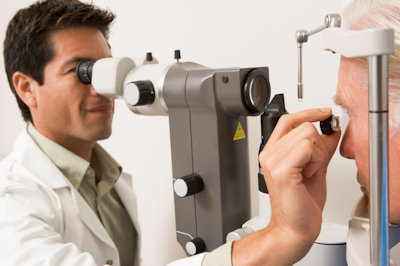Diabetes is a complex disease that involves the body not producing enough of a hormone called insulin, which moves sugar out of the bloodstream and into cells where it can be stored for later use as energy. There are many health complications from having diabetes, and one is the risk of glaucoma. Elmquist Eye Group can help you care for your eyes, regardless of your health conditions.
 Nearly 30 million Americans have diabetes, with most having adult-onset diabetes that sets in after age 40 in sedentary overweight people. While diabetes can mean neurological and cardiovascular complications, diabetic eye disease is a common complication of diabetes.
Nearly 30 million Americans have diabetes, with most having adult-onset diabetes that sets in after age 40 in sedentary overweight people. While diabetes can mean neurological and cardiovascular complications, diabetic eye disease is a common complication of diabetes.
What is diabetic eye disease?
Diabetic eye disease describes several eye problems that people with diabetes often develop: cataracts, diabetic retinopathy and glaucoma. Cataracts are a normal part of aging in which the eye lens becomes cloudy from protein deposits. People with diabetes often develop cataracts at much earlier ages and are twice as likely to develop cataracts than a person without diabetes.
When someone has diabetic retinopathy, the tiny blood vessels in the retina become damaged. Because the retina is the part of the eye that is light-sensitive, vision can be significantly affected. Retinopathy is by far the most common eye disease seen in diabetics. In fact, nearly eight million Americans over age 40 have diabetic retinopathy.
Diabetes and Glaucoma
People with and without diabetes can have glaucoma, a condition caused by excess fluid that creates pressure on the optic nerve in the back of the eye. Whether you have diabetes, glaucoma or both, it is very important to see a glaucoma specialist at Elmquist Eye Group.
A form of glaucoma called open-angle glaucoma is the most common type. People with diabetes are more prone to having open-angle glaucoma, and someone with open-angle glaucoma has a higher risk of developing diabetes. A rare type of glaucoma called neovascular glaucoma is most commonly associated with diabetes.
How does glaucoma begin?
In the early stages, glaucoma has very few symptoms. Patients don’t even know anything is wrong. When glaucoma reaches an advanced stage, it can steal your eyesight. Left untreated, glaucoma is the leading cause of blindness in the world today.
Glaucoma begins in the middle chamber of the eye, where a small amount of fluid is produced to flow around the eye lens. The pressure behind the eye builds up over time, presses on the optic nerve and results in nerve damage.
Protect Your Eyes
Diabetes and a risk of glaucoma definitely go hand in hand. Another risk factor for glaucoma is a family history of diabetes. People of certain ethnicities –Japanese, Polynesian, Latino, Native American and African – are at higher risk for both diabetes and glaucoma.
If you have diabetes, you should see an eye specialist at least once a year to have a dilated eye exam to test for glaucoma, cataracts and retinopathy. Patients in southwest Florida have trusted their eyes to Elmquist Eye Group for many years. Early diagnosis and treatment are key to minimize the risk of vision loss that results from glaucoma, so come be our next new patient today. We want to care for you and your eyes.
